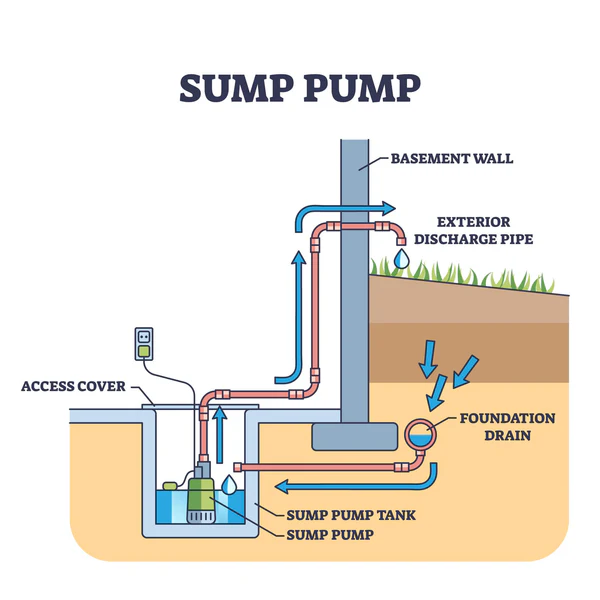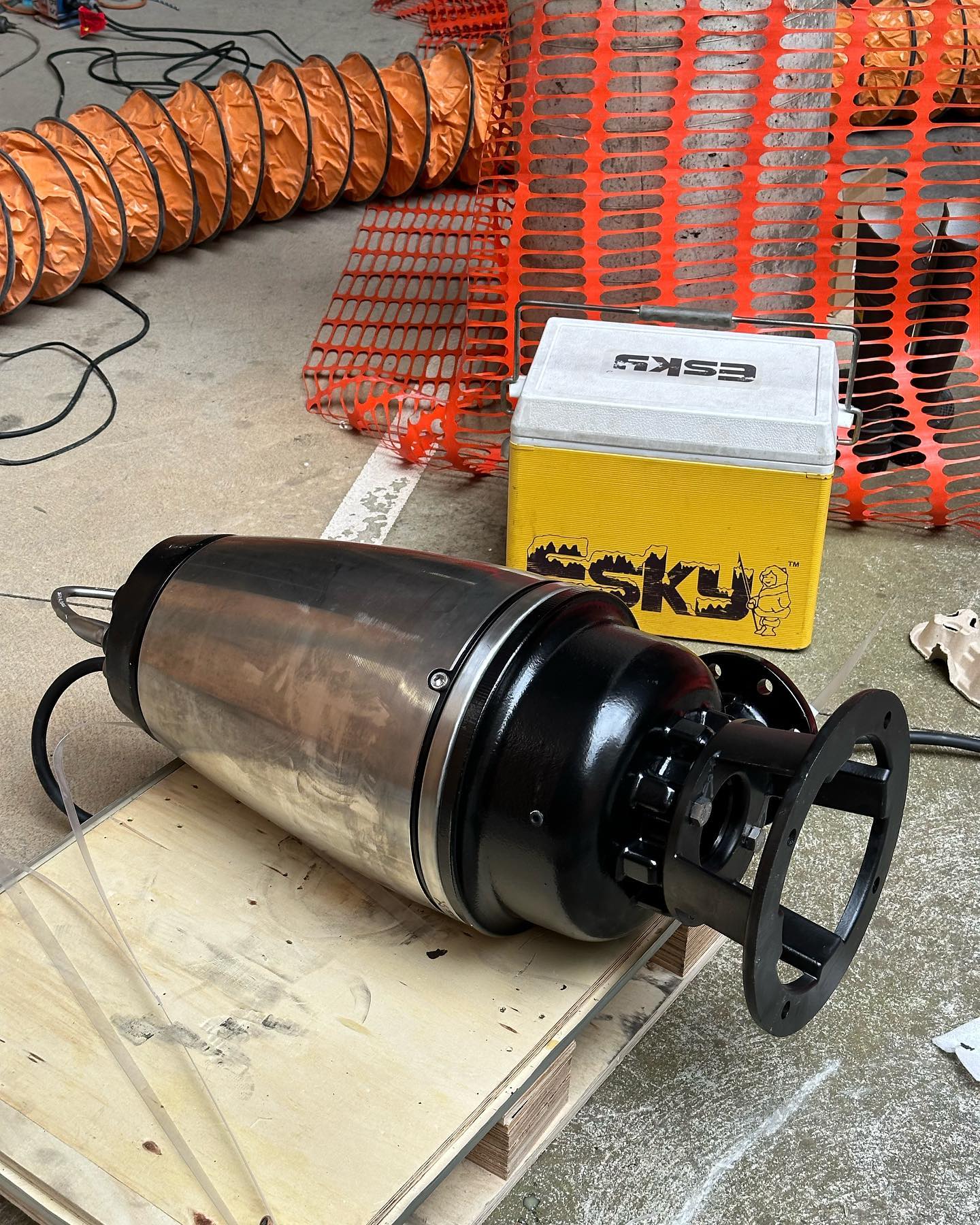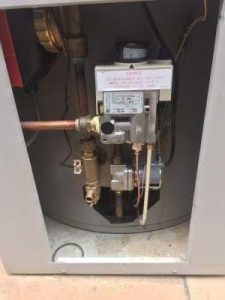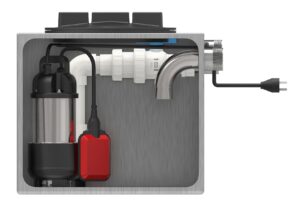Sump pumps can be used not only for homes to prevent basement flooding but also for industrial and municipal use such as managing water in sewers, drains and low lying areas where water accumulates.
These pumps remove excess water from a sump pit and discharge it away from structures. Whether it’s keeping your basement dry, managing stormwater in urban drainage systems or preventing overflows in commercial settings sump pumps are an important part of protecting your property from water damage.
We’ll go over how sump pumps work, the parts and tips for optimal performance in residential basements to industrial drains.

What is a Sump Pump?
A sump pump is a device that protects your low lying areas or crawl spaces from flooding. Installed in a hole called a sump pit (indoors or outdoors), this pump works 24/7 in most cases to remove water from the low lying area.
The sump pit is located at the lowest point, where water or waste naturally collects. When water rises the sump pump kicks in, using its built in valves and sensors to detect the increase in water or pressure.
It then pumps the excess water out of the area through a discharge line and directs it away from your the low lying area. This proactive water management system is key to preventing water damage and structural damage.
Water Collection: The Sump Pit
Sump pumps are designed to handle water accumulation in low lying areas such as basements or waste pits. Water or waste flows to the lowest point which is usually the sump pit installed at the lowest section of the area.
How It Works: The pit collects water from various sources; rain, groundwater or even leaks in the house. The sump pump’s job is to detect rising water levels and pump water out of the pit before it overflows. The pump turns on automatically when the water level rises, either by a float switch or a pressure sensor.
Key Components
Sump Pit: A hole in the ground or floor that is the water collection point.
Pump Motor: Turns on when water reaches a certain height.
Float Switch: The float arm rises with the water level and triggers the pump.
Flooding can cause structural damage, mold and foundation problems so the sump pump is a key tool in water management of the area.
How Sump Pumps Detect Water Levels
A sump pump turns on when the water level rises in the sump pit. The pump uses different types of float switches to know when to turn on. These switches ensure the pump starts when the water reaches a certain height.
Common Types of Float Switches
Tethered Float Switch: Common in larger basins, this type moves freely and triggers the pump when the water reaches a certain height.
Vertical Float Switch: Mounted on a vertical rod, it rises with the water level and is good for smaller pits.
Pressure Switch: Detects water pressure and turns on the pump when the pressure reaches a certain point.
When the float switch works correctly it ensures a sump pump works properly by detecting water levels accurately and preventing flooded areas.
Pump Activation
Once the float switch detects a high enough water level the pump is activated. The pump motor spins the impeller which pushes water through the discharge pipe. This discharge line directs the water outside of the area, usually a safe distance from risk of water damage or flooding.
How It Works
- Float Switch Activates: When the water reaches a certain height the float valve triggers the pump motor.
- Pump Motor Turns On: The motor spins the impeller, moves water through the discharge line.
- Water Discharge: Water is moved away from the area through pipes.
Good discharge systems prevent water from getting back into the low lying area and reduces the risk of water damage and flooding.
Types of Sump Pumps and Their Applications
There are two types of sump pumps: submersible pumps and pedestal pumps. Knowing the difference helps homeowners choose the right system for their needs.
Submersible Pumps: These pumps are installed inside the sump pit and submerged in water. They are more powerful and quieter, good for homes and industrial situations that get heavy rain and frequent flooding.
Pedestal Pumps: These pumps sit outside the pit, only the hose is submerged. They are easier to maintain and used in areas with with smaller sump pits.
Both serve the same purpose but are chosen based on pit size, power needs and frequency of use. Submersible pumps are for industrial use and heavy use environments, pedestal pumps for smaller water management.
Choosing the Right Sump Pump
Choosing the right sump pump is important to ensure sump pump works properly and protects the area from water damage. Here are some key factors to consider:
Horsepower: The horsepower of your sump pump should match the water flow in your basement. Higher horsepower pumps can handle more water, good for areas that get heavy flooding.
Flow Rate: This measures how much water the pump can move per minute. Make sure the flow rate is enough to keep up with the water entering the sump pit.
Switch Type: The type of float switch you choose can affect the pump’s performance. Options are tethered float switches for larger pits and vertical or narrow-angle switches for smaller spaces.
Pump Type: Decide between a submersible pump which is quiet and submerged in the sump pit or a pedestal pump which is easier to maintain but noisier. For added security consider a battery backup sump pump to ensure operation during power outages. Most of the major brands such as Davey & Grundfos have a range of submersible pumps.
Brand and Quality: Investing in a good brand and quality pump will save you from frequent repairs and replacements and ensure long term reliability.
By considering these factors you can choose a sump pump that suits your needs and gives you peace of mind during heavy rain and flooding.
Power Source and Backup Systems
Sump pumps run on electricity but a power outage can cause the primary sump pump to fail especially during severe storms when flooding is most likely. To prevent water damage, backup systems are essential.
Backup Options
- Battery Backup Sump Pump: This system ensures your primary sump pump keeps working even if the power goes out. It uses a battery powered motor to power the pump when your primary sump pump fails.
- Water Powered Backup: This uses the homes water supply to generate pressure and power the pump. Good during power outages during heavy rain.
Having a backup system installed will prevent mechanical failure during storms and keep your basement dry.
Maintenance for Sump Pump to Work Reliably
Maintenance is critical for sump pump to work properly. Without maintenance, mechanical parts will degrade and fail or become less efficient.
Maintenance Steps
- Check for Debris: Make sure the sump pit is clear of debris which can block the discharge pipe or clog the pump.
- Test the Float Switch: Regularly check if the float switch rises properly and triggers the pump motor. Faulty float switches can prevent the pump from turning on and flood your basement.
- Inspect the Discharge Line: Make sure the discharge pipe directs water far enough from the house and check for leaks or blockages.
- Replace Worn Parts: Over time parts like float switch or motor will wear out. Replace them as soon as possible to prevent mechanical failure.
By maintaining these parts you’ll have reliable sump pump operation during heavy rain.
Troubleshooting Common Issues
Even the best sump pumps can have issues. Here are some common problems and their solutions to get your sump pump working again:
Float Switch Not Working: If the float switch is not triggering the pump check for damage or debris obstructing it. Cleaning or replacing the float switch will usually fix this.
Pump Motor Not Turning: Make sure the pump is plugged into a grounded outlet and check the power supply. If the motor still doesn’t turn on it might be a bigger electrical issue that needs professional help.
Discharge Pipe Clogged: A clogged discharge pipe will prevent water from being pumped out. Check the pipe for any blockages and clean or replace it as needed to maintain water flow.
Float Valve Stuck: A stuck float valve will prevent the pump from working. Check for debris or damage and clean or replace the valve to get it working again.
Switch Mechanism Faulty: If the switch mechanism is not working properly it will prevent the pump from turning on. Check the switch for wear or damage and replace it if needed.
By fixing these common issues quickly you’ll keep your sump pump in good shape and water damage will be prevented. Maintenance and repairs are key to a dry basement and a safe home.
Sump Pump Installation: Doing it Right
Proper sump pump installation is key to water related issues in a home. A poorly installed pump will cause water damage, poor drainage and premature failure.
Installation Steps
- Choose the Right Location: Install the sump pit at the lowest point of the area where water will accumulate.
- Ensure Proper Slope for the Discharge Line: The discharge pipe should slope downward and direct water away from the foundations or low lying areas.
- Seal the Sump Pit: Prevent debris and contaminants from entering the pit by sealing the area around the area.
- Install Alarm Systems: Many sump pump systems come with alarms that will alert you when the pump fails or water reaches dangerous levels.
Professional installation means the system will work efficiently and not fail during peak usage times.
Summary
A sump pump is a must have for any home to prevent flooding and water damage. By knowing its parts—float switch, pump motor and discharge pipe—you’ll get it to work properly.
Maintenance, proper installation and a battery backup will give you peace of mind during heavy rain or power outages. For those who want to protect low lying areas, a sump pump will manage water and prevent costly repairs.






